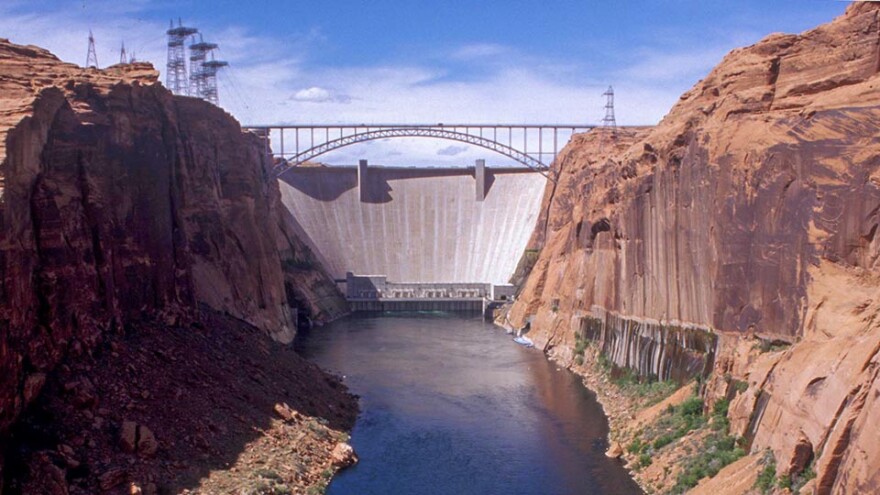Glen Canyon Dam on the Colorado River typically provides enough hydroelectric energy to power up hundreds of thousands of homes in the Western United States. Now, it’s threatened by drought. The U.S. Bureau of Reclamation says Lake Powell could drop below the level needed for hydropower production as early as next year. KNAU’s Melissa Sevigny spoke with hydraulic engineer Heather Patno about what that scenario would mean for the Southwest.
So describe to me, as we’re dealing with drought and Lake Powell is dropping, how does that affect the hydropower that you can generate at the dam?
There are two different impacts. One is the amount of water that can pass through the generators. For each unit of water going through the generators, that produces power. The other one is how efficient those generators are, and that has to do with the depth of the water. The higher the depth of the water, the more pressure there is, so the more efficient that water is as it goes through the turbines.
Talk to me about the latest projection from the U.S. Bureau of Reclamation. What do they show about our ability to keep producing hydropower in the future?
Right now our forecasts do show that there is an increased risk and uncertainty to keep producing power…. So we’re doing everything that we can to look at the increased risk of those critical elevations, like minimum power pool, and those discussions are ongoing.
You used the term “minimum power pool,” can you explain what that means?
Minimum power pool is at elevation 3490 feet. What that means is that below 3490 the water coming out of Glen Canyon Dam can no longer go through the penstocks and the turbines and generate hydropower…. We do have four hollow jet valves or bypass tubes, and water can continued to be released below minimum power pool without that hydropower generation…. But again, we’re looking at this risk and uncertainty and doing everything we can to implement a plan.
Tell me more about that. What can be done to prop up the lake levels and prevent this from happening?
One of the things that happened last year was an emergency release of additional water from the upper three reservoirs to help bring some of that water down to Powell, as we were seeing Powell elevations decrease dramatically last year. That was the first release under our drought response operations agreement that was signed in 2019. And the upper states and Reclamation, along with cooperating agencies and resources, are all having conversations about what future or additional releases may look like into the future.
In the most dire scenario, if you couldn’t produce hydropower from Glen Canyon Dam, what would that mean for people who are living in Arizona and the West?
Hydropower is generally considered a renewable resource, because the reservoir is there and you can have an immediate generation increase, because the reservoir is like a large battery that’s available, if the water is there. If we decrease to minimum power pool, people in Arizona and the West will have to find their power in other places, and it will generally cost more.
Heather Patno, thank you so much for speaking with me.
Thank you.




